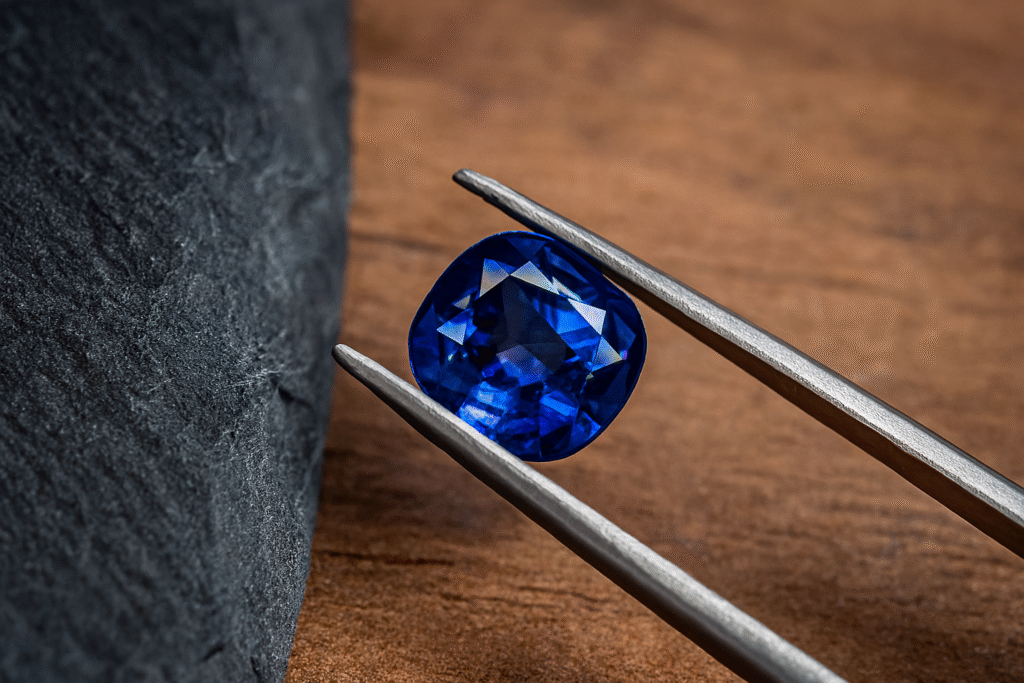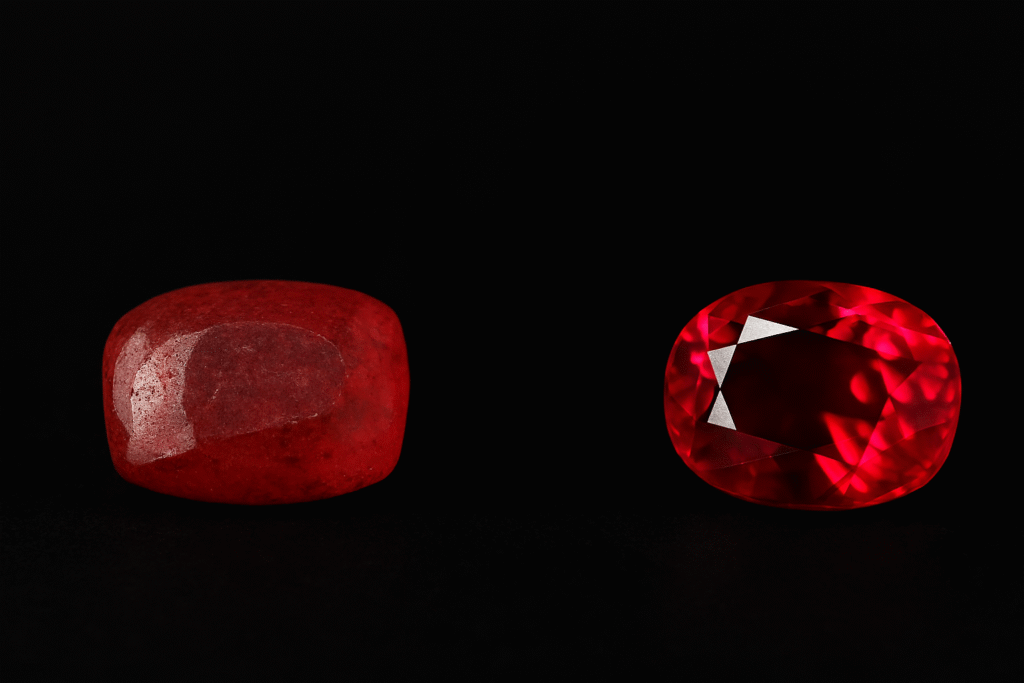Why Your Heated Sapphire Isn’t Fake
When you hear the word “treated,” you may think your sapphire is fake. But it isn’t.
More than 95% of sapphires and rubies on the market are heat-treated.
Heat treatment is a simple process. The stone is exposed to controlled high temperatures so the natural color and clarity improve. It makes colors richer and inclusions less visible. Once done, the change is permanent, so the stone will not fade or change over time.
This is very different from unstable treatments like:
- Dyeing (color added with chemicals)
- Fracture-filling (glass used to hide cracks)
- Diffusion (color artificially forced into the surface)
These treatments can wear off or damage the stone. Instead, heat treatment is stable and lasting.
Heated vs. Unheated Value
So what’s the real difference for buyers? Price.
- A fine unheated sapphire is rare, and that rarity drives its price much higher.
- A heated sapphire of similar size and beauty costs far less, so it becomes affordable for more buyers.
For example:
- A 3-carat unheated blue sapphire with strong color can sell for three to five times more than a heated one of the same quality.
- Both stones are natural, and both are durable, but the unheated one is rarer.
What You Should Do as a Buyer
Also, you should take some simple steps before buying:
- Ask for a lab certificate, because it will state if the sapphire is heated or unheated.
- Compare prices carefully, so you don’t pay unheated prices for a heated stone.
- Decide what matters more: rarity or budget.
If you want beauty and durability at a reasonable price, a heated sapphire is a smart buy.
But if you want rarity and long-term investment value, choose an unheated sapphire and be ready to pay the premium.
Heat treatment is standard for sapphires and rubies, with over 95% undergoing this stable enhancement. This process improves color and clarity without affecting durability. Buyers should know the difference between heated and unheated stones, recognize unstable treatments like dyeing or fracture-filling, and understand the price gap between the two.



